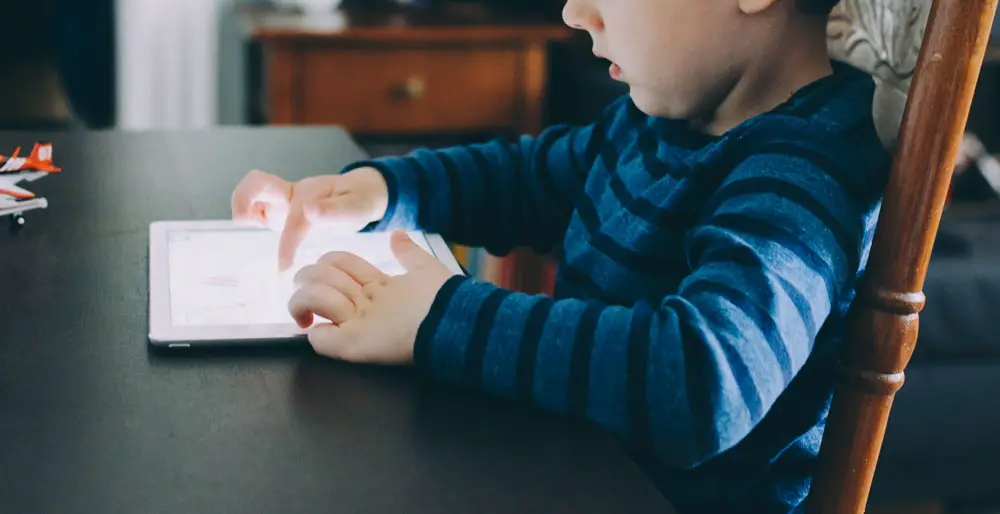
By Brendon Hyndman
A newly published study in the journal PLoS ONE suggests spending time on screens is unlikely to be directly harmful to young children. The US study attracted global attention, as screen time has been commonly blamed for disrupting the healthy habits of our youth.
Headlines announced “Screens are not as dangerous as you think”, “Screens don’t really hurt kids”, “Kids are not harmed by long screen times”, “Potential benefits of digital screen time” and “Kids being glued to screens doesn’t cause anxiety”.
However, we still need to be wary of health consequences, despite the absence of strong links between screen time and children’s health. The researchers suggested screen time was not a direct cause of depression or anxiety and was linked to improved peer relations, but their findings came with caveats. The study involved almost 12,000 nine-to-ten-year-olds from 24 diverse sites across the United States. (See: Kids and their computers: Several hours a day of screen time is OK, study suggests)
Why worry about screen time?
Young people are using screens more than ever. The average number of screen-based digital devices reported to be owned and used by children in Australia has reached 3.3 devices per child.
These devices include laptops, smart phones, televisions, tablets, gaming devices and family computers. Similar to many Western nations, children are estimated to be using a mobile device or watching television for 3-4 hours a day and exceeding health guidelines.
Surveys have found almost all high school students and two-thirds of primary school students own a screen-based device. Children are spending at least a third of their day staring at screens.
In Australia, teachers and parents have expressed concerns that the fast uptake of digital devices (including social media use) is having negative impacts on children’s physical activity and their ability to be empathetic and focus on learning tasks.
Most concerns relate to screen time being associated with depression, anxiety, self-esteem, social interactions and sleep quality.
With children using screens so much at an early age, establishing a causal link between screen time and health outcomes has become more important than ever. Increased screen use as a result of the pandemic has added urgency to this research.
What did this latest study investigate?
The US study investigated the relationship between screen time and children’s academic performance, sleep habits, peer relationships and mental health.
Parents completed a screen time questionnaire, a child behaviour checklist and anxiety statement scales (including sections on children internalising or externalising problems and attention). They reported on their child’s grades at school, their sleep quantity and quality, family income and race.
The children independently completed a 14-item screen time questionnaire about the different types of recreational media use on screens. They were also asked how many close friends they have.
The researchers did find small significant associations between children’s screen time and decreases in quality of sleep, attention, mental health and academic performance. These effects were not confirmed as directly caused by screen time.
Possible explanations for the weak links between screen time and negative health impacts include:
- relying on parent reporting
- the design of the screen time survey
- social quality measurement.
Parent reporting has limitations
Most of the assessment relied on parents being able to report accurately on their children’s health behaviours. Surveys and questionnaires are often more reliably completed by the target participants, unless they are unable to do so (for example, due to illness).
It can be difficult for adults to properly identify children’s behaviours, and parents reporting on a child can lead to many inaccuracies or less sensitive data associations. For instance, it would be very difficult to report on a child’s sleep disruptions without using a digital measuring device.
Parents are also relying on how much they see their child, the depth and openness of their conversations, various family structures, shared interests and conversations with teachers.
Survey design matters too
It’s important that surveys are easily understood and suitable for the participants. At the ages of nine and ten, kids could still be grappling with the meaning of the different screen time aspects of the survey. They also might not yet fully understand their own behaviours or habits.
In the screen-time questionnaire, the maximum time category was four hours a day and above. This will not identify excessive use. An international study of almost 600,000 children found beyond four hours (for boys) and two hours (for girls) was harmful.
Future research also needs to consider important positive screen strategies such as eye protection, posture, role modelling and active screen games with physical health benefits.
Other major considerations include the different ways children engage with devices. For example, screen time can involve interactional, recreational or passive entertainment. Different devices also require different levels of screen intensity.
The different screen time intensities have varying levels of influence on children’s mental health, life satisfaction and interactions. Researchers strongly emphasise measuring the quality of screen time, rather than the quantity.
How do you define close friends?
The social survey focused on how many close friends a child has. This will not always mean social quality. A child may think of all contacts on social media as close friends and may simply be interacting with more people when using their devices.
Because the study relied on a quantity criterion with the wording “close friends”, we can’t be sure screen time actually strengthened peer relations.
In addition, it is an early age to be measuring screen use as research shows non-sedentary behaviours (that is, physical activity) peak later in primary school. This is when children are most active, engage in less screen time and most enjoy outdoor play compared to later years of schooling.
Where to from here?
The study has laid a foundation to add further comparisons and evidence as the participants approach adulthood in the next decade. It reinforced the influence of socio-economic status (SES) on children’s health and identified key trends, with boys reporting more total screen time during weekdays and weekends than girls.
Parents and teachers still need to show caution with children’s screen time, as the study did find associations between screen time and a variety of negative impacts on kids’ health.
Even if the negative outcomes were not identified as major and screen time wasn’t established as the direct cause, a review of research suggests we are unable to rule out these associations.![]()
![]()
Brendon Hyndman is Associate Dean (Research) at Charles Sturt University in in New South Wales, Australia.
![]()
![]()





























Leave a Reply